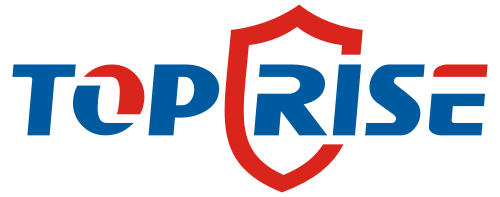Hearing protection is essential for individuals working in noisy environments. EN 352-2 sets the standard for earplugs used in personal hearing protection, particularly in industrial settings. This European standard ensures that earplugs provide effective noise reduction and comfort, and offer reliable ways to safeguard workers’ hearing. This blog explores their importance and their key features, providing guidance on choosing the best protection.
What is EN 352-2?
EN 352-2 is part of the EN 352 series, which regulates hearing protection devices in Europe. Specifically, EN 352-2 focuses on earplugs. It outlines the performance, safety, and comfort requirements in environments with harmful noise levels. Earplugs that meet EN 352-2 offer a consistent level of noise reduction, ensuring workers are under protection from long-term hearing damage.
This standard applies to all earplugs that serve as hearing protection, ensuring their effectiveness in high-noise environments such as manufacturing, construction, and music venues. Companies must ensure their earplugs meet these standards to guarantee safety and comfort.

Key Features
Noise Reduction Rating (NRR)
The Noise Reduction Rating (NRR), or Single Number Rating (SNR), measures how well earplugs reduce noise. EN 352-2 requires earplugs to show a minimum NRR, typically ranging from 20 dB to 40 dB. This rating helps determine the earplug’s effectiveness in different noise environments.
Material Requirements
EN 352-2 specifies that manufacturers shall produce earplugs from skin-safe materials. Common materials include foam, silicone, and rubber. These materials should be non-irritating and durable enough to maintain their shape after repeated use. Proper material choice is essential for comfort, especially for soft earplugs.
Fit and Comfort
To be effective, earplugs must provide a secure fit. Poorly fitting earplugs may lead to noise leakage, reducing their protective capabilities. The standard emphasizes that earplugs should be easy to insert and remove. They must not cause discomfort or injury to the ear canal, especially during long-term wear.
Testing and Certification
Earplugs must undergo rigorous testing to ensure they comply with EN 352-2. The tests assess their ability to attenuate noise and maintain comfort over time. Certified earplugs meet the noise reduction and safety standards required by the regulation.
Durability
The earplugs should last for a reasonable period without degrading. Reusable earplugs must maintain their effectiveness after cleaning. Disposable earplugs must be durable enough for single-use without affecting comfort or performance.
Ease of Use
EN 352-2 also stresses that earplugs must be easy to use. Workers should be able to insert and remove the earplugs quickly, without unnecessary effort or risk of injury. This is particularly important in fast-paced or hazardous environments.
Types of Earplugs Under EN 352-2
Earplugs meeting EN 352-2 can be broadly classified into two categories:
Disposable Earplugs
Disposable earplugs are usually made from foam and designed for single use. They are cost-effective and convenient, making them ideal for environments requiring frequent replacement. However, they are less eco-friendly and not as durable as reusable options.
Advantages: Affordable, hygienic, convenient.
Limitations: Less durable, not as environmentally friendly.

Reusable Earplugs
Reusable earplugs are made from durable materials like silicone or rubber. These earplugs are designed for long-term use, providing comfort and excellent noise reduction. They are ideal for industrial environments where earplugs are needed for extended periods.
Advantages: Long-lasting, more eco-friendly, comfortable.
Limitations: Requires cleaning and maintenance.

Applications of EN 352-2 Earplugs
Earplugs that comply with EN 352-2 are used in various high-noise environments, including:
Manufacturing
Factories with loud machinery or heavy equipment require earplugs to protect workers’ hearing from harmful noise.
Construction
Construction sites are noisy due to power tools and machinery. Earplugs help protect workers from prolonged exposure to dangerous noise levels.
Mining
Mining operations expose workers to high levels of noise from drilling, blasting, and heavy machinery. Earplugs with high NRR are essential.
Music and Entertainment
Venues with loud music or large events require hearing protection. Musicians, concertgoers, and sound engineers use earplugs to reduce sound exposure.
Airport Ground Operations
Ground crew working around aircraft must use earplugs to block out the high noise levels of jet engines.
Military
Soldiers exposed to gunfire, explosions, and aircraft noise rely on earplugs for hearing protection in combat zones.
How to Choose the Right Earplugs Under EN 352-2
When selecting earplugs, several factors should be considered to ensure optimal protection:
Assess the Noise Level
Choose earplugs with an appropriate Noise Reduction Rating (NRR) for the specific environment. Higher noise levels demand earplugs with a higher NRR.
Comfort
Earplugs should be comfortable to wear for long periods. Soft earplugs made of foam or silicone are ideal for all-day use.
Durability and Reusability
If earplugs are required for long-term use, consider reusable models. These earplugs offer better durability and comfort, making them a cost-effective choice for regular use.
Fit and Sizing
Choose earplugs available in different sizes or those that can be adjusted for a better fit. Proper fit ensures maximum noise attenuation.
Use Case
For activities such as sleeping, snoring prevention, or traveling on a plane, consider specialized sleep earplugs or earplugs for snoring. These provide comfort and quieter environments for a restful sleep.
Conclusion
Earplugs under EN 352-2 play a vital role in protecting hearing in noisy environments. Whether you need earplugs for work, sleep, or travel, selecting the right type is crucial. From disposable options to reusable silicone earplugs, there are plenty of choices to meet your needs. By choosing ones that comply with EN 352-2, workers can be assured that they are receiving adequate protection against hearing loss.
When choosing earplugs, consider the Noise Reduction Rating (NRR), material, fit, and comfort. Earplugs manufacturers in China and around the world offer a wide variety to meet these standards, ensuring safety and comfort in any noisy setting.


